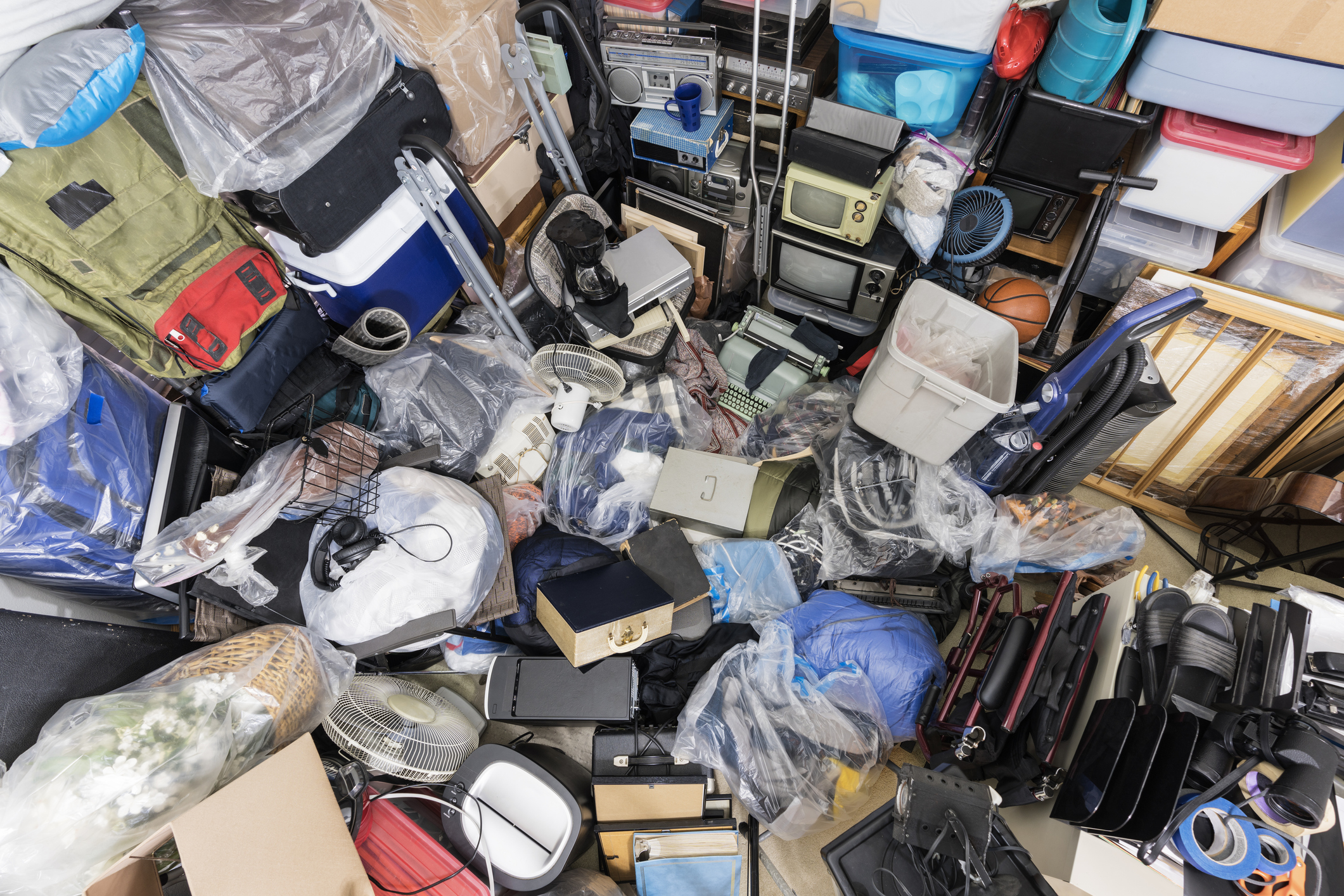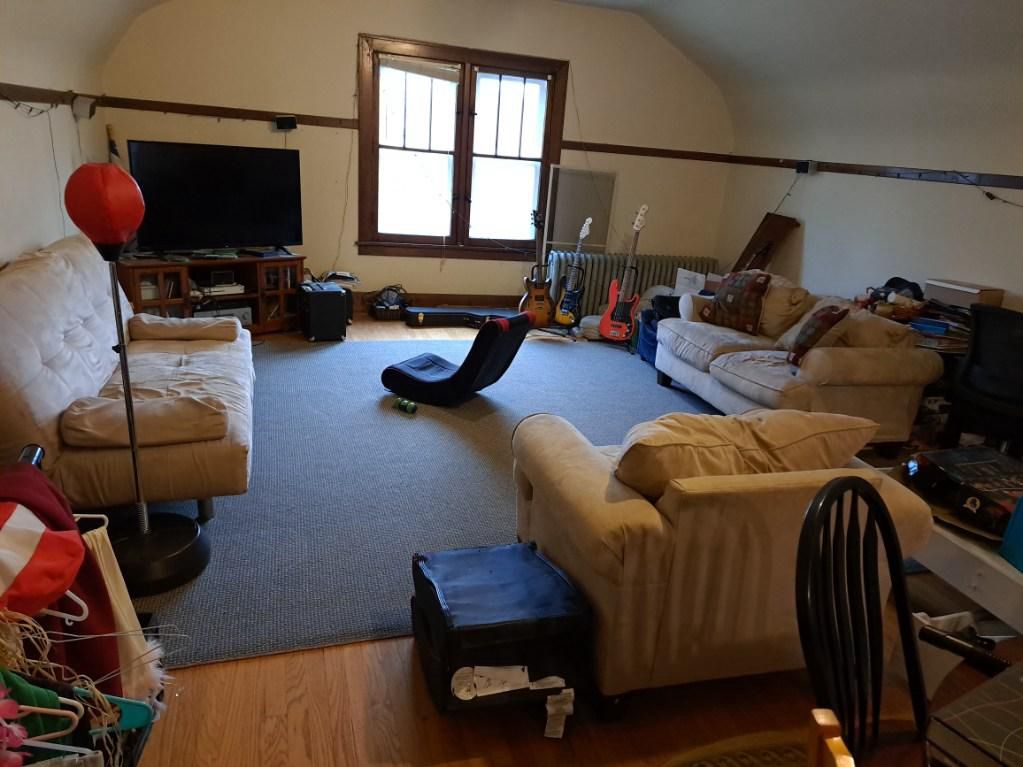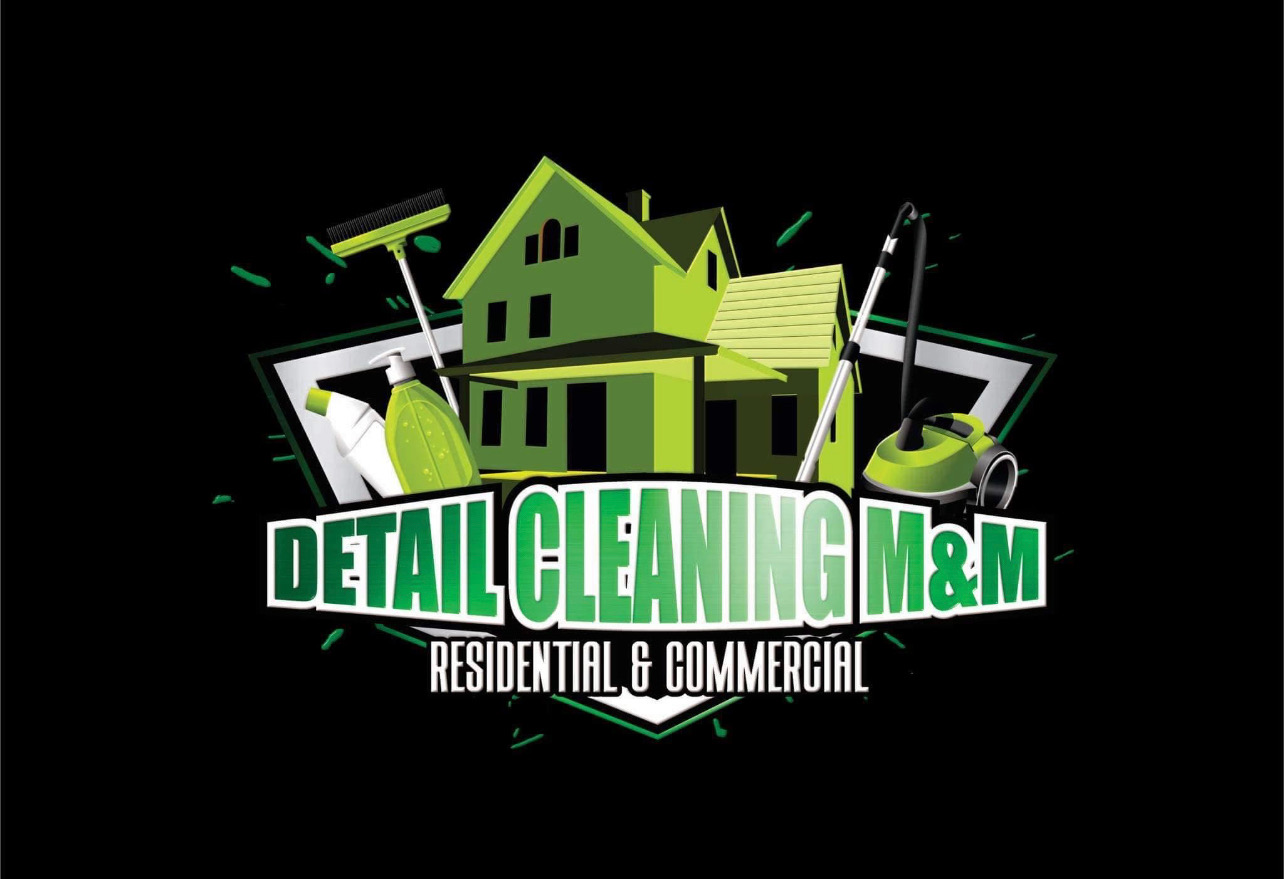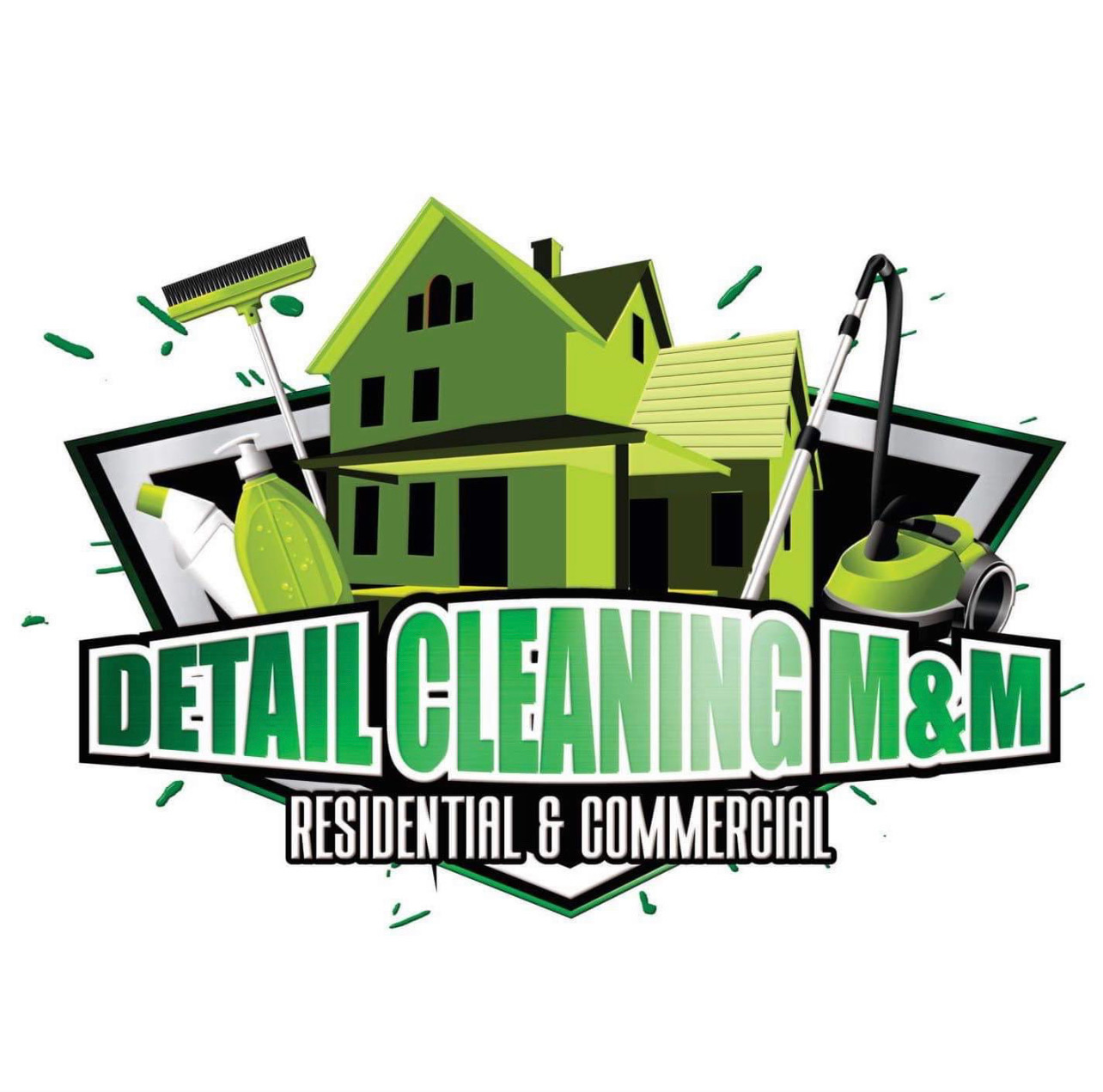Supportive Hoarding Cleanup Services and Junk Removal
- Free Estimate -A hoarding situation can become so overwhelming that it can impact a homeowner’s family, relationships, and overall well-being. If you or someone you know is struggling with hoarding, Detail Cleaning M&M can help. We help others step into a cleaner, stress-free home with compassionate and supportive hoarding cleanup services. If you are looking for help with a hoarding cleanout situation, contact our team today. We offer free on-site hoarding cleanout estimates in your area. Once we arrive at the home, our professional cleaners will quickly assess the situation and give you an estimate based on your exact needs. If you decide not to move forward with our hoarding cleanout services, that is not a problem. Estimates are obligation-free. To book your free on-site estimate, contact our team today!
Hoarding typically involves a large quantity of items that are considered by others to be valueless or are collected in excess of what is considered psychologically healthy.
The types of articles that a hoarder may keep include:
- Newspapers
- Magazines
- Clothing
- Food
- Boxes
- Containers
- Household Cleaning Supplies
- Broken Electronics, and More.

Animal hoarding – in which the person keeps more cats, dogs, or other pets than can reasonably be cared for – is a closely related issue. Some people keep trash that they are unwilling or unable to throw away. Others keep items that could theoretically have minor sentimental value, but are typically stored in excess of what is reasonable.
Even people who hoard may recognize their items as valueless. Unlike collectors, there is not a pride in the amassed possessions, and many hoarders experience embarrassment at the thought of others seeing the collection of objects.
The reasons for keeping such items include the belief that they may one day be needed, fear of losing or forgetting something, the need for a reminder of a person or event, or that they were a bargain that can’t be discarded. In some cases, a person may have a minor hoarding issue that becomes more severe over time as a result of being overwhelmed by their existing collection.
Hoarding can also interfere with other functions. For example, taking care of pets in a household with hoarding can be physically difficult, so pets lay their waste around the property and the hoarder is unwilling or unable to clean it, leading to bio-hazards. Similar difficulties functioning can lead to food and trash buildup as well, even in those not specifically hoarding food or trash. Over time, that buildup can also lead to animals and pests entering the property and finding ample places to hide and breed.
It is estimated that over 1 million can be diagnosed with compulsive hoarding disorder. Many times, the inability to dispose of items may often correlate with another mental disorder such as depression, OCD, and ADHD. Dementia and psychosis can also lead to hoarding tendencies in some people, and older age groups tend to be more affected.
As compulsive hoarding goes on, the amount of objects exceeds available storage and begins to take over floor space, counter space, table space, and more, reducing livable areas in the property. Some hoarding may encompass only a single room where all extra possessions are kept, but other situations involve the entire property.
No matter how much space hoarding encompasses, the obsessive collection of objects will have significant repercussions for the hoarder, family members, property managers, and others.
Hoarding Levels
The Institute for Challenging Disorganization (ICD), a non-profit organization focused on helping those who suffer from chronic disorganization, have a Clutter-Hoarding Scale that offers guidelines for the severity of hoarding situations, including what safety measures should be taken in remediating these environments.
Their standards divide the effects of hoarding into five categories:
- Household Functions
- Structure and Zoning
- Animals and Pests
- Health and Safety
- Personal Protective Equipment (PPE)
Based on the extent of damage and risk in these categories, the ICD outlines hoarding along these levels of extremes:
Level I Hoarding – At this level, clutter is minimal and does not impede living spaces or appliances. All exits and stairways are accessible, electrical and ventilation systems are functional, and there are no safety concerns. Pets and pet waste are managed and no pests are on the property. Personal protective equipment is optional but not necessary during cleanup.
Level II Hoarding – Level two includes clutter that begins to obstruct living areas and blocks at least 1 exit. HVAC or electrical systems may not be fully functional and an appliance may be broken. There is some pet waste or signs of pest infestation, and odors resulting from dirty dishes, food, or plumbing. Mildew may be present. Gloves and personal sanitation are considered enough for cleanup.
Level III Hoarding – Clutter prevents the use of certain rooms and makes it difficult to navigate stairs and hallways. There is a clear lack of household maintenance at this level, broken appliances, and light structural damage. Some clutter may be collecting outside. Pests are noticeable and animal numbers exceed local regulations. Face masks, eye covering, gloves, and boots are the minimum required PPE.
Level IV Hoarding – Several rooms cannot be used at this level due to clutter, and there may be damaged walls, floors, plumbing, appliances, and electrical systems. Animal infestations are extensive, odors are obvious, and there may be rotting food or sewage backup. Full PPE is recommended at this stage and bio-hazard risks are present.
Level V Hoarding – Kitchens or bathrooms are unusable due to clutter, and exits are blocked. There is permanent damage to indoor or outdoor structural elements, as well as septic, electrical, and HVAC systems. Human urine and feces are present, as is extensive mold. If animals are on the property, they are dangerous to people or themselves. Full PPE is required to safely clean this type of property.
Level I and Level II hoarding are the only levels that should ever be handled without professional assistance, and only then with the recommended safety equipment. But less extensive hoarding still benefits from professional assistance as there may be hazards that are not apparent at first and cleanup work that is intensive.
Property and Health Risks From Hoarding
Hoarding creates an unlivable situation. The psychological repercussions are extreme for those living in the home or apartment, compounding with any underlying issues or disorders that first prompted the hoarding.
But beyond the psychological effects, there are also very real and urgent risks to physical health and the property. These risks are more extreme in longer term hoarding situations but exist in any case of hoarding depending on what items are collected and other ongoing issues during the time.
Since hoarding is often accompanied by neglect of a property, other forms of property damage can be extreme when they are addressed. Damage may have also been hidden by clutter, letting it get to an advanced and potentially harmful state before it can be mitigated.
The most common issues we see in a hoarding situation include:
Mold and Mildew – Leftover food, moisture entrapped by clutter, or a leak in the home that has been hidden can all provide a growing ground for mold. High temperatures and humidity in south Florida make this a particular risk. Once any mold has begun to grow, it will continue to do so, releasing potentially toxic spores into the air.
Pest Infestations – Crumbs and trash provide ample food for insects and rodents while clutter offers hiding places. Roaches, rats, mice, ants, and a range of other pests can be crawling among the debris.
Animal Waste – If cats, dogs, or other pets are kept inside the home, feces and urine are often present as well. These can cause odors, staining, and the spread of bacteria. Even if there are no house pets present, animal invaders like rodents can leave scattered droppings too.
Animal Remains – A deceased pet or dead rodent causes odors, attracts pests, and releases bacteria as it decays. The animals can be trapped in clutter or buried, making it difficult to find the source of the smell.
Plumbing Issues – A lack of maintenance can result in deteriorated pipes, clogged sinks and toilets, and other issues with sewage can result in bio-hazard waste in different areas of the home.
Trip Hazards – Clutter in a hoarding environment can reach to the ceiling and contain many small items that makes navigating the property difficult. For residents that are older or have impaired mobility, this puts them at risk of a fall while moving around.
Property Stress – The extreme weight of collected items, particularly when coupled with other damage that can weaken a structure like mold or water, can leave properties unstable. Ceilings, flooring, and other surfaces can weaken over a long period of time to the point of collapse.
Fire Risk – Many materials – like papers, magazines, cardboard boxes, clothing, and more – are highly flammable. Additionally, debris around vents, overcrowded electrical outlets, misused space heaters, and poorly maintained appliances increase the chance of overheating electrical components and fire.
If there are harmful bacteria or spores on site from mold, bio-hazardous waste, or other contaminants, they may also become airborne if disturbed. This increases the chance of health issues when these particles can be inhaled.
The dangerous results of hoarding are a threat for those living in or around the situation, as well as those handling cleanup. This makes it necessary to take precautions for safety to avoid coming into contact with contaminants during the cleanup process.
Properties and Individuals We Support With Our Hoarding Restoration Services
Unlike some forms of disaster restoration, hoarding cleanup and repair is not always requested by the homeowner. There are many different individuals that may need to request hoarding cleanup and removal and require an experienced team capable of handling all the needs of the property. That is why we work with:
- Homeowners
- Family Members
- Estate Executors
- Property Managers
- Case Workers
- HOA Representatives
- Real Estate Agents
- Bank Agents
- House Flippers, and More

If you have a hoarding situation at a non-residential property, we can assist there too. Storage units, offices, and other areas that host extensive clutter can be safely, effectively, and quickly be restored with professional excessive content removal.
Our primary role is your safety, and we recommend calling us for any level of hoarding if you’re not sure the extent of the damage or potential pathogens. Even a small hoarding situation can have mold, waste, and other contaminants that can affect the health of those that try to take on these situations themselves.
We’ll be there to offer not only our expert cleanup services, but also a caring and helping hand to support you during this difficult time. If you are the one that struggles with hoarding, we can discuss the different ways we can provide support based on what makes you more comfortable, and if you are someone else helping eliminate buildup on another person’s behalf, we will talk about what the steps entail and what we can do to help you with the damage restoration process.
Hoarding isn’t typically a choice. It is the result of complex mental health conditions, deteriorating memories, trauma, and more. That is why our services are 100% judgment free, with the sole goal of helping restore the property to like-new condition as safely and efficiently as possible.
Eco-friendly help for hoarding
Waste prevention is particularly important to people who are coping with hoarding. Detail Cleaning M&M can offer peace of mind with eco-friendly junk removal services, including hoarding cleanouts, attic and basement cleanouts, furniture and appliance removal, and more. No matter the size or complexity of the cleanout or junk removal project, our expert team will make every effort to donate, recycle, or repurpose the items we collect. If an item can’t be recycled or donated, we do our best to ensure it’s disposed of responsibly.
It can be difficult to see a loved one living in a cluttered space. While our mission at Detail Cleaning M&M is to keep items out of landfills, please know that our first priority will be to act with empathy and sensitivity during this potentially stressful time. You can count on us to help you and your loved ones with hoarding.
Hoarding cleanup is one of our specialty services. Hoarding is the result of a complex mental health condition, and those that struggle with hoarding often find that it occurs gradually. But over time, as a result of years and potentially decades of storing different types of items, hoarding can become a hazardous issue that requires a more professional clean.
For those that have struggled with hoarding, the type of cleanup can vary considerably. Different individuals may find themselves in need of different types of cleanup, with someone hoarding shoes or paperwork requiring different cleaning solutions than those hoarding trash or pet waste.
CUSTOMER REVIEWS
Hours
Mon – Fri – 9:00 am – 5:00 pm
Sat & Sun – Closed

